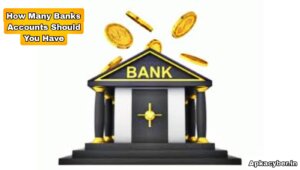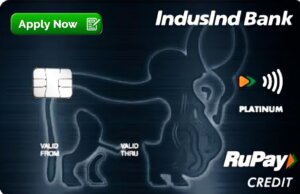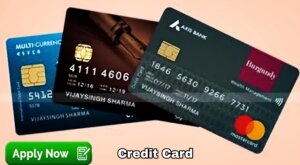
Managing money effectively is an essential life skill, but one of the first questions many people overlook is surprisingly simple: how many bank accounts should you have? While the answer isn’t “one-size-fits-all,” understanding the purpose and strategy behind maintaining multiple accounts can lead to better financial organization, improved saving habits, and increased financial security.
In this article, we’ll explore the ideal number of bank accounts you should consider, the reasons behind having multiple accounts, types of accounts you might need, and tips to manage them wisely.
Why Does the Number of Bank Accounts Matter?
At first glance, having more than one bank account might seem unnecessary. However, strategic banking can significantly enhance your money management skills. Each account can serve a distinct purpose: daily spending, saving for emergencies, planning for short-term goals, investing for the future, or even simply keeping different parts of your finances organized.
Think of bank accounts like financial tools. Just as you wouldn’t use a hammer for every home improvement task, you shouldn’t rely on a single bank account to meet all your financial needs.
Moreover, separating your money into different accounts can:
-
Provide Clarity: You can easily track where your money is going.
-
Enhance Security: In case of fraud or bank failures, spreading funds reduces risks.
-
Boost Savings: Dedicated accounts for savings goals prevent the temptation to spend.
-
Simplify Budgeting: It’s easier to manage and stick to a budget when money is allocated.

The Core Accounts Everyone Should Consider
Most financial experts recommend maintaining at least three types of bank accounts. Here’s a breakdown:
1. Primary Checking Account (for daily spending)
This is your main transaction hub. Your paycheck is deposited here, and you use it to pay for groceries, rent, utilities, subscriptions, and other daily expenses.
Features to look for:
-
No (or low) fees
-
Easy mobile access
-
Free ATM access
-
Bill pay services
Keeping this account organized ensures you always know how much is available for regular spending.
2. Emergency Savings Account
An emergency fund acts as a financial cushion for unexpected events — car repairs, medical expenses, job loss. Ideally, this account should cover three to six months’ worth of living expenses.
Features to look for:
-
High interest (high-yield savings account)
-
Quick access (without penalties)
-
FDIC insurance
By isolating emergency savings, you avoid accidentally dipping into these vital funds.
3. Long-Term Savings or Investment Account
Separate from your emergency fund, this account is intended for larger, planned goals — such as buying a home, funding education, or retirement.
Features to look for:
-
Higher returns (investment accounts like IRAs, Roth IRAs, or brokerage accounts)
-
Tax advantages
-
Automation options (automatic transfers)
Long-term savings accounts help build wealth steadily over time without mingling with everyday money.

Optional Accounts to Further Fine-Tune Your Finances
Depending on your personal goals and lifestyle, you might benefit from adding additional specialized accounts:
4. Secondary Checking Account (for discretionary spending)
Set up a second checking account dedicated to entertainment, hobbies, shopping, and dining out. Some people call this their “fun money” account.
By isolating spending, you ensure essentials are never compromised by lifestyle choices.
5. Short-Term Savings Account (for goals)
Planning a vacation? Need to save for holiday gifts or a new laptop? A short-term savings account can help you earmark funds specifically for these goals.
Features to look for:
-
Minimal fees
-
High-yield options
-
Easy transfers
Label the account with your goal (many online banks allow naming your accounts) to stay motivated.
6. Business Account (if you’re self-employed or side hustling)
Mixing business and personal finances can create confusion and tax headaches. A dedicated business account:
-
Simplifies bookkeeping
-
Provides legal protections
-
Enhances professional credibility
Even if you freelance only occasionally, a separate account is a smart move.
7. Health Savings Account (HSA)
If you have a high-deductible health plan (HDHP), an HSA can be an excellent tool for covering medical expenses while enjoying triple tax advantages (tax-deductible contributions, tax-free growth, and tax-free withdrawals for medical costs).
HSAs can also be used as a retirement savings vehicle once you reach retirement age.
What About Joint Accounts?
If you’re married or share finances with a partner, a joint account can be useful for paying shared expenses like rent, mortgage, groceries, and utilities. However, it’s still wise to maintain individual accounts to preserve some financial independence and privacy.
Some couples operate under a “yours, mine, and ours” system:
-
Joint account for shared bills and goals
-
Individual accounts for personal spending
This structure allows transparency while maintaining autonomy.

How Many Accounts Are Too Many?
There’s no official limit on the number of bank accounts you can have, but more accounts mean more to manage. Here are signs you might have too many:
-
You lose track of balances.
-
You miss minimum balance requirements, leading to fees.
-
You forget account login details.
-
Managing transfers becomes overwhelming.
The key is intentionality. Every account should serve a clear, useful purpose.
Tips for Managing Multiple Bank Accounts
If you decide to set up multiple accounts, keep these tips in mind:
1. Automate Transfers
Set up automatic transfers to savings accounts. For example, every payday, send 20% to savings before you even have a chance to spend it.
2. Label Your Accounts
Use descriptive names like “Vacation Fund,” “Emergency Fund,” or “Mortgage Savings” if your bank allows it. This helps you stay organized and motivated.
3. Use a Budgeting App
Apps like Mint, YNAB (You Need a Budget), or Personal Capital can link all your accounts and give you a clear picture of your finances in one dashboard.
4. Consolidate When Necessary
If you find you aren’t using an account anymore, don’t be afraid to close it. Keeping things streamlined reduces mental clutter.
5. Beware of Fees
Choose banks that offer no-fee or low-fee accounts. High fees can slowly drain your money, defeating the purpose of careful financial planning.
How to Choose the Right Bank Accounts for You
When deciding how many accounts you need, ask yourself:
-
What are my financial goals?
-
Do I have a stable source of income?
-
Am I good at tracking multiple accounts?
-
Am I saving enough for emergencies, short-term needs, and retirement?
-
Am I prepared for unexpected expenses?
Base your banking structure on your lifestyle, goals, and financial behavior — not what someone else is doing.
Real-World Examples
Example 1: The Minimalist
-
1 Checking Account
-
1 High-Yield Savings Account (combined emergency + goal savings)
-
1 Retirement Account (401(k) or IRA)
This simple setup works for someone who values minimalism and easy management.
Example 2: The Strategist
-
1 Primary Checking Account (bills and necessities)
-
1 Secondary Checking Account (discretionary spending)
-
1 Emergency Savings Account
-
2 Goal-Specific Savings Accounts (vacation, car purchase)
-
1 HSA
-
1 Investment Account (brokerage)
This structure suits someone with multiple goals and a disciplined approach to money management.
Final Thoughts
Ultimately, there is no single “correct” number of bank accounts that fits everyone. Some people are perfectly content managing two accounts, while others may find five or six better aligns with their financial goals.
The key is purpose and simplicity:
-
Purpose ensures every account has a reason to exist.
-
Simplicity prevents you from getting overwhelmed.
When set up thoughtfully, multiple bank accounts can be a powerful tool to take control of your financial life, achieve goals faster, and create a system that works for you — not against you.
Take action today: Review your current accounts. Identify any gaps. And create a banking system that supports the life you want to build.